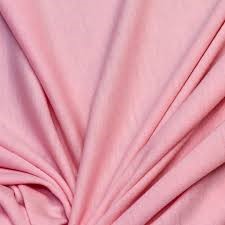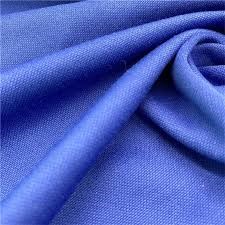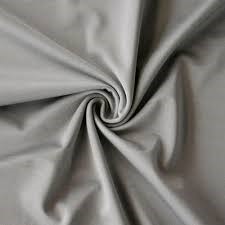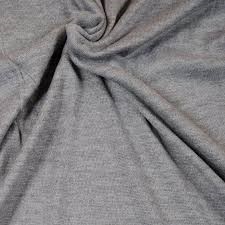Types of Legging Material | 6 Best Legging Fabric Materials
A piece of women’s attire that fits particularly tightly over both legs, starting from the waist to the feet, like a very thin pair of trousers, is known as leggings. Generally, what happens is that women probably don’t think twice about the Fabric materials that are being used to make leggings, specifically when you’re excellent at the way they point out the figure or help your range of motion whilst working out. But did you know that your selection of legging fabric can affect how you use them?
Suppose you find difficulties in knowing the Best Legging Fabric Materials and can’t make a knowledgeable decision. Whether you want a pair for an outfit or crouching at the gym – selecting the right choice in the legging fabric means you’ll get more out of them. In fact, this comprehensive legging materials guide will teach about the Types of Legging Materials used for manufacturing leggings, their properties, and how to choose the suitable fabric.
What are the 6 Best Legging Fabric Materials?
- Elastane (Spandex, Lycra)
- Polyester
- Nylon
- Merino wool
- Cotton
- GORE-TEX
A Comprehensive Guide on Best Legging Fabric Materials
It is said that fabric can make or break leggings. Here is a list of some suitable fabrics for leggings you should consider when buying your next (or first) tights. These materials are found to be very strong, stretchy, comfortable, and suitable for all skin types.
1. Elastane (Spandex, Lycra)
It is found that almost every active legging has elastane, which is simply woven into them. Sometimes, it is also marketed as Lycra Fabric or Spandex. Its unique property is that it gives leggings their stretchability, which makes them perfect for the gym and offers a flattering fit. Basically, you only find a percentage of elastane woven into leggings because it is seen that on their own, they wouldn’t be so comfortable to wear. They are best when you are supposed to do sweaty exercise or want to make a form-fitting appearance. It is so stretchy, compressive, moisture-wicking, retains its shape, shiny, and is a pill.

2. Polyester
As we know, polyester is a synthetic fiber created from coal and petroleum. It’s one of the most popular fibers in textiles. As far as knit polyester is concerned, it feels soft, has a fantastic texture, and feels the same as cotton. It also feels light and breathable. Polyester has a good sweat-wicking characteristic and is easier to handle. It possesses high-stretches. The melting point for Polyester is generally 260 Celsius(For ironing); it’s a superb fabric under sun exposure and has good anti-acid durability.

3. Nylon
One of the most popular fabrics used in leggings is Nylon, even though it is stronger than polyester. It’s amazingly durable yet lightweight, easy to handle, and doesn’t wrinkle easily. The main drawback of this fabric is its ability to shrink, especially if your nylon leggings aren’t washed at the right temperature. It is also found to be stretchy, durable, soft on the skin, smell-resistant, prone to pilling as well, and has a shiny appearance.

4. Merino wool
As the name suggests, it is a cool-climate fabric and a well-known material for leggings to wear in particularly cold weather. However, unlike wool, merino wool also serves as a sweat-wicking fabric to wear in particularly warm weather. It is found to be thinner and softer, making it a comfortable as well as great choice for leggings material. It is analyzed that, many athleisure and activewear use merino wool (mostly blended with polyester) due to its all-weather properties. The only negative point of it is that this material is expensive.

5. Cotton
Cotton fabrics are generally more soft and durable, making them great alternatives to wear daily and at the gym. Over time, however, it tends to lose shape, so you often see a mixing of stretch fibers by using Lycra or Spandex, which helps to hold its stretchability factor throughout its life. If you’re a gym lover or tend to sweat more, cotton fabric isn’t a good choice because it is breathable when it is dry, not when it is wet. This is why selecting a pair of cotton leggings blended with a sweat-resistant fabric, for example, spandex or polyester, is excellent for resisting sweat patches

6. GORE-TEX
It is observed that more than a fabric for leggings, GORE-TEX is a kind of membrane that prevents liquids and vapor from passing through. It means it is a suitable material for leggings that you will wear in rough and tough weather conditions. The material also bonds with many other kinds of materials and is used to make hats, socks, ski jackets, and even bags. Also, it is waterproof; GORE-TEX leggings tend to be windproof yet breathable.

Factors to Consider While Choosing The Best Legging Fabric
The correct choice of fabric for leggings will make or break their outcome. So, the following are the factors to be considered for determining the suitable fabric for leggings.
Stretchy
You must hold to knits. The fabric must tend to stretch both vertically (with the selvage) and horizontally. It is necessary to choose really stretchy knit fabrics. When you make a pair, it is found that your actual pattern is slightly smaller than you are (negative ease); that’s why you need really stretchy fabric for leggings, and then they’ll fit you like a second skin. Having negative ease in the pattern and stretchy fabric prevents your leggings from being baggy.
Soft
As leggings will be like a second skin for your body, you will want them to be really comfortable. Natural fibers are an obvious choice for this but also try to look at synthetics with a brushed finish.
Synthetic
When you think about how we pull on leggings and then also how our legs move through the knees and hips, you will find that it is required for the fabric to have a good recovery. You don’t want them to bag out at your knees after the first wear. So, recovery is very important, and it is achieved with synthetic fibers (nylon, spandex, etc). You can opt for 100% synthetic or try blends that combine natural fibers and synthetics.
Strain
When stretching it out, ensure you are happy with how the fabric (particularly the print) appears. Sometimes, the fabric can become sheer when stretched, or the print can look silly.
Conclusion
In conclusion, different types of fabrics and Materials are available for leggings for various preferences and activities. Starting from the breathable and moisture-wicking properties of nylon and polyester blends to the soft, stretchy comfort of cotton, each fabric brings some unique features. Some innovations include spandex, improved elasticity, and ensuring a snug fit for great performance during workouts. Additionally, enhancing sustainable options, like bamboo and recycled materials, highlights a growing awareness of eco-friendly fashion. Ultimately, the swarm of fabric choices helps consumers select leggings that align with their style and improve their comfort and performance in diverse settings.
- References: The Definitive Guide of Leggings Fabric https://leggingsupplier.com/leggings-fabric/
- A comprehensive guide to legging materials: https://lacuna.fit/blogs/resources/a-comprehensive-guide-to-legging-materials-in-case-you-re-as-confused-as-we-were
- By Sylvia, May 23, 2022, What’s the best fabric for leggings? https://www.wapititravel.com/blog/en/fabric-for-leggings/
- Melissa Mora, March 12, 2019, TYPES OF LEGGINGS FABRIC AND WHERE TO BUY FABRIC FOR LEGGINGS: https://mellysews.com/types-of-leggings-fabric-and-where-to-buy-fabric-for-leggings/
- Danielle, 1 August 2018, Choosing the right fabric for leggings: https://threadden.com/sewing-tips/choosing-the-right-fabric-for-leggings/
